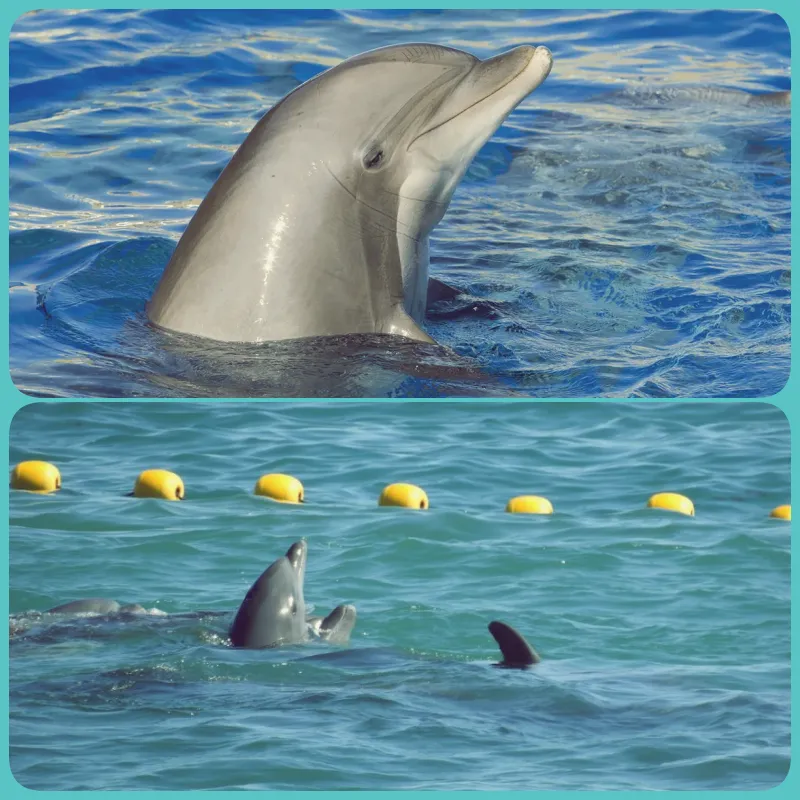
Dolphin Attacks in Japan Linked to Sexual Frustration: Experts Explain
A sexually frustrated male dolphin is terrorizing beachgoers in the Fukui prefecture of Japan, leaving researchers to believe that his behavior is linked to loneliness and sexual frustration. This Indo-Pacific bottlenose dolphin (Tursiops aduncus) has been responsible for multiple attacks since 2022, and authorities are struggling to find effective measures to prevent further incidents.
Dolphin Attacks Becoming an Annual Occurrence in Fukui
Over the past two years, dolphin attacks have injured at least 18 people in Fukui prefecture, with incidents mostly involving minor bites but some resulting in more severe injuries, such as broken bones. The attacks typically occur during the summer months, and experts believe the same lone male dolphin is responsible based on video footage and photographs.
Tadamichi Morisaka, a professor at the Cetacean Research Center at Mie University, explained that the dolphin’s behavior suggests he is seeking interaction with people. “He shows up at a beach, bites people gently, then wanders off and repeats the behavior,” Morisaka told Nature.

Is the Dolphin Just Playing?
Dolphins are known to engage in playful biting with each other as part of their normal social behavior. Morisaka suggests that this dolphin may believe he is interacting in a friendly manner with humans. “If he really wanted to attack, he could have used more force,” Morisaka explained, noting that the bites are gentle by dolphin standards.
Why is the Dolphin Alone?
Typically, bottlenose dolphins live in social groups called pods, with males forming strong bonds with other males. These partnerships often involve biting, chasing, and even sexual behaviors. Researchers believe that this solitary dolphin in Fukui is trying to treat humans as he would another male dolphin, seeking companionship and possibly expressing sexual frustration.
According to Ryoichi Matsubara, director of the Echizen Matsushima Aquarium in Fukui, the dolphin has been observed pressing his genitals against people, behavior that suggests mating instincts may be at play. In both 2022 and 2023, this unusual and alarming behavior was noted, raising concerns about potential future incidents.
Could Sexual Frustration Be the Cause?
Some experts, like Simon Allen of the Shark Bay Dolphin Research project in Western Australia, suggest that the dolphin’s behavior may stem from sexual frustration. Dolphins, like humans and other social animals, can exhibit physical expressions of their hormonal fluctuations and social needs. The dolphin’s attempts to interact with humans may be driven by his desire to dominate or mate, which could explain the escalating aggression.
Measures Taken to Protect Beachgoers
Fukui prefecture authorities have taken steps to reduce the risk of dolphin attacks by discouraging interaction with the dolphin. Warning signs have been posted, lifeguards are patrolling the beaches, and swimming hours have been restricted. Additionally, underwater acoustic devices emitting high-frequency noises have been installed to deter the dolphin from approaching certain areas.
However, Professor Morisaka is concerned that these measures may not be enough. Dolphins are intelligent creatures and could become accustomed to the acoustic devices. As an alternative, he suggests developing an echolocation detection system to alert beachgoers when a dolphin is nearby. “If we can keep people out of the water, the dolphin will eventually lose interest and leave the area,” Morisaka said.

Future Dangers: What Happens if the Attacks Escalate?
Experts warn that continued interaction with the dolphin could lead to more dangerous encounters. Dolphins, especially males, may attempt to assert dominance over humans if they perceive themselves as socially superior. This could result in more aggressive behaviors such as tackling or mounting, which could cause serious injury.
“We saw a bit of this last summer, and I was very concerned,” Morisaka said. Considering that dolphins can weigh up to 200 kilograms (440 pounds) and swim at speeds of up to 30 kilometers per hour (19 mph), a full-speed dolphin charge could be as dangerous as a traffic accident.
Troubling Situation in Need of a Solution
As the dolphin continues to interact with humans on Japanese beaches, the situation grows increasingly concerning. While current deterrent measures may provide temporary relief, experts like Morisaka are pushing for more long-term solutions to protect both beachgoers and the dolphin.
Without intervention, the dolphin’s behavior could escalate, making beach visits in Fukui more dangerous. As researchers continue to study the dolphin’s motivations, the need for effective and humane solutions becomes clearer.






